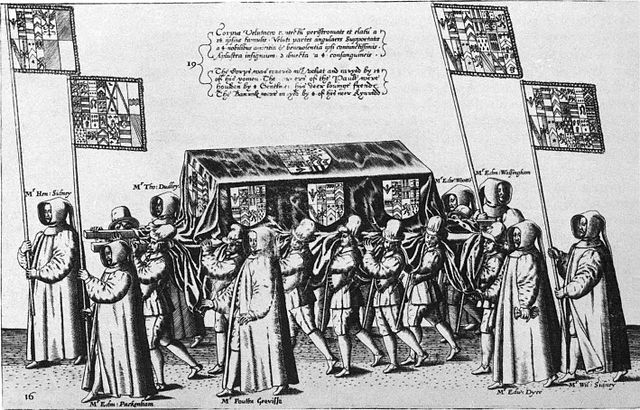Sir Philip Sidney was an English poet, courtier, scholar and soldier who is remembered as one of the most prominent figures of the Elizabethan age. His works include a sonnet sequence, Astrophel and Stella, a treatise, The Defence of Poesy and a pastoral romance, The Countess of Pembroke's Arcadia.
Sir Philip Sidney, after Antonis Mor
Frances Walsingham, attributed to Robert Peake, 1594
Memorial for Sir Philip Sidney at the spot where he was fatally injured
The funeral of Sir Philip Sidney, 1586
Probably composed in the 1580s, Philip Sidney's Astrophil and Stella is an English sonnet sequence containing 108 sonnets and 11 songs. The name derives from the two Greek words, 'aster' (star) and 'phil' (lover), and the Latin word 'stella' meaning star. Thus Astrophil is the star lover, and Stella is his star. Sidney partly nativized the key features of his Italian model Petrarch, including an ongoing but partly obscure narrative, the philosophical trappings of the poet in relation to love and desire, and musings on the art of poetic creation. Sidney also adopts the Petrarchan rhyme scheme, though he uses it with such freedom that fifteen variants are employed.
The title page of the second edition of Astrophil and Stella (1591), from the British Library's holdings
Frontispiece to copy of Astrophel and Stella from University of Edinburgh Library.






